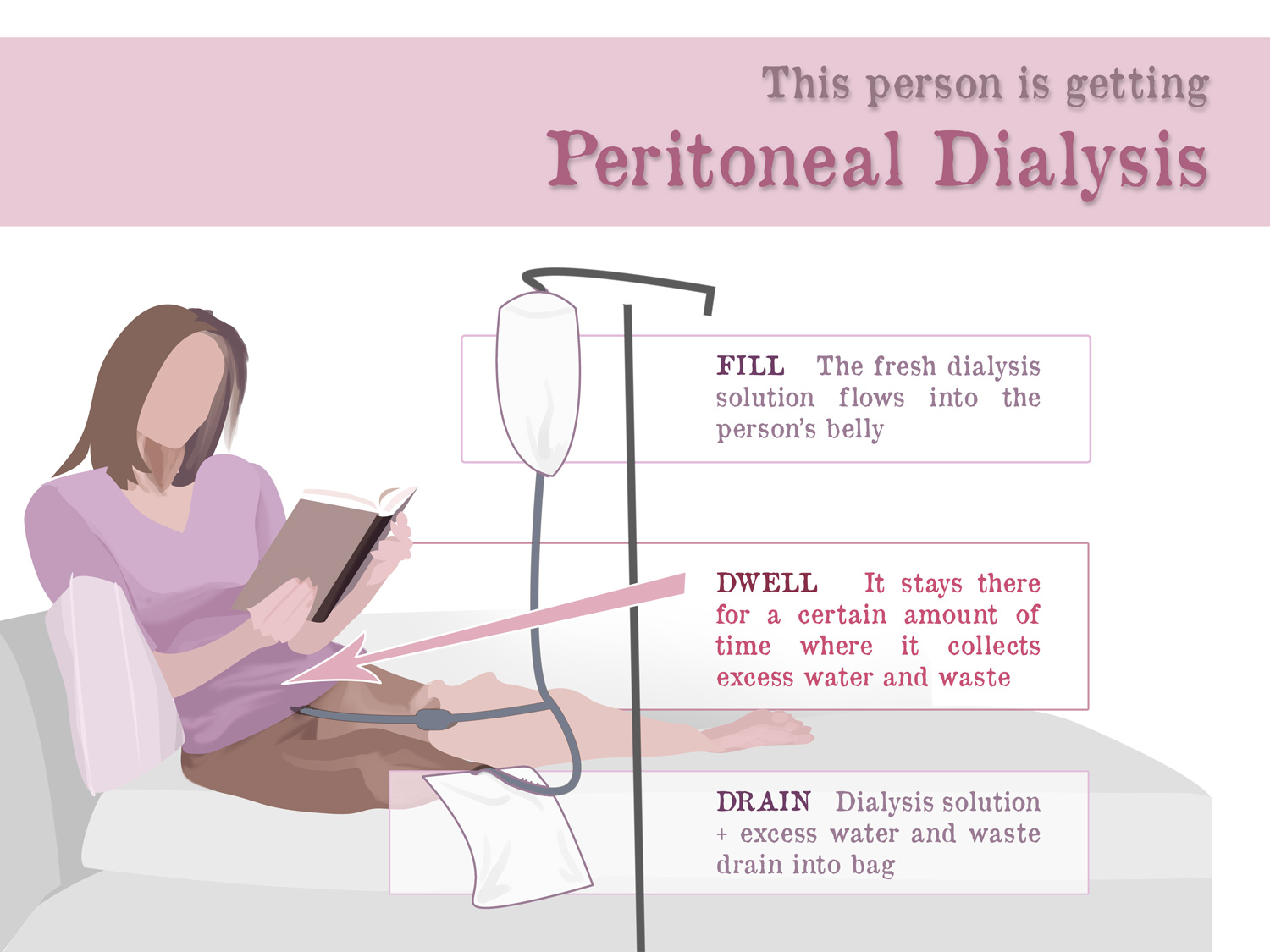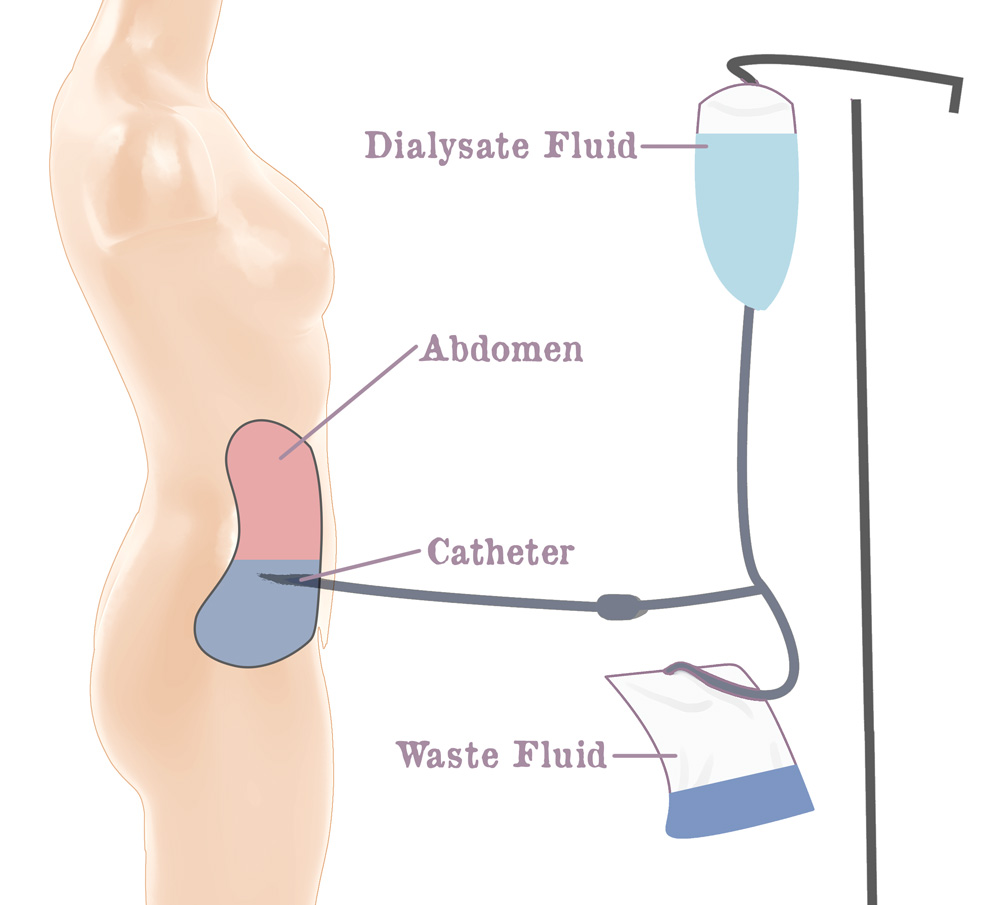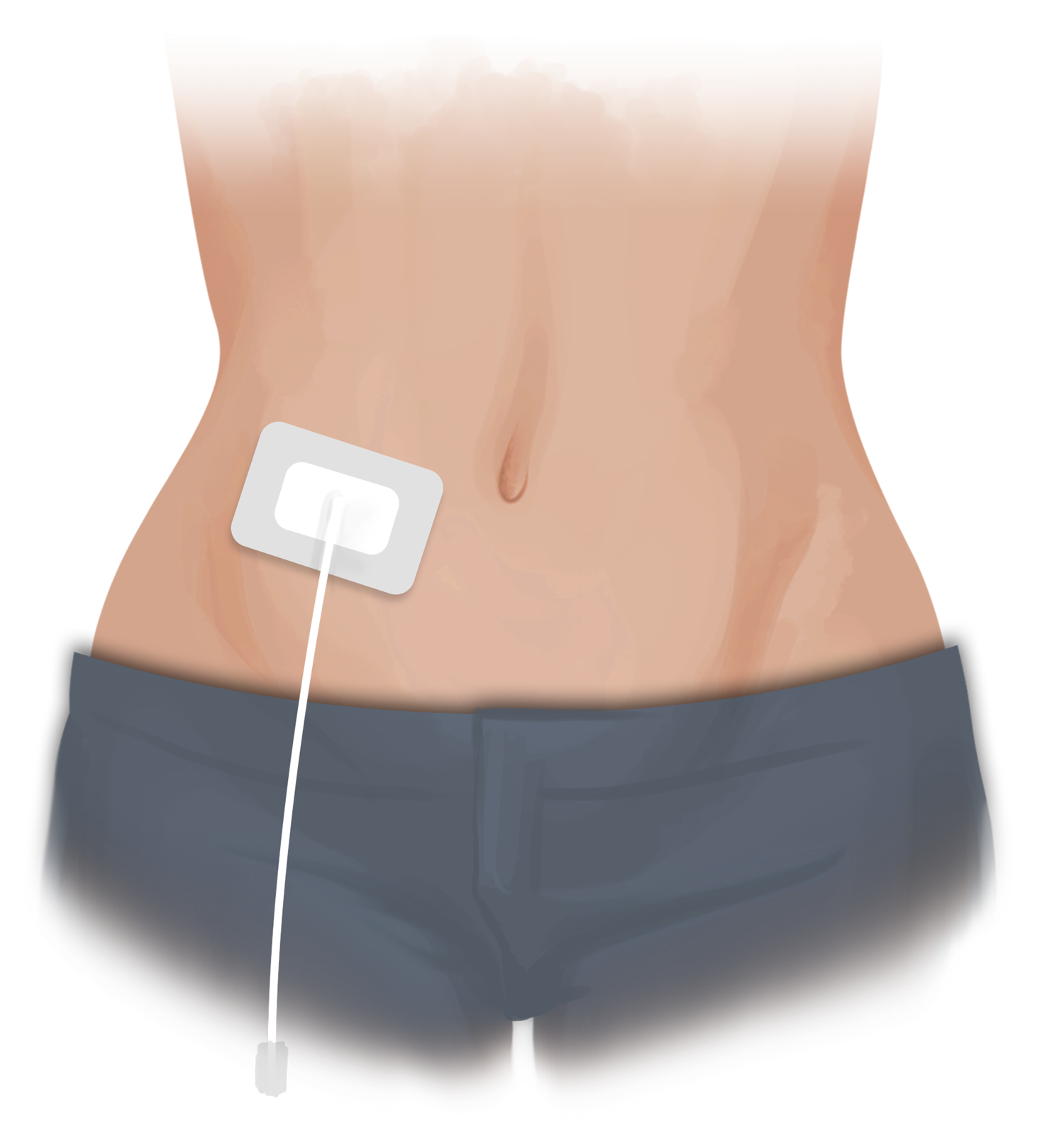What is Peritoneal Dialysis?
We have a membrane that lines our abdominal cavity called the peritoneal membrane. Fortunately this membrane can serve the function of a filter. PD uses this lining to remove waste buildup from the blood using a solution called dialysate.
A catheter is surgically placed in your abdominal cavity which allows us to perform ‘an exchange’. The catheter is soft and flexible. Although it is surgically placed in the abdomen it’s small enough that it can be hidden under our clothes and it doesn’t interfere with work, exercise, showering or sexual activity.
We use this catheter to perform exchanges. With an exchange dialysate enters through the catheter into your abdomen. Over several hours the dialysate will pull waste from your blood and then it drains out of your abdomen (but this includes waste + excess water). An exchange is performed several times each day and it is most similar to your normal kidney function.
There are two kinds of peritoneal dialysis:
Manually during the day – (CAPD)
Automated Peritoneal Dialysis (APD)
The basic treatment is the same for each. However, the number of treatments and the way the treatments are done make each method different.
TYPE 1: Continuous Ambulatory Peritoneal Dialysis (CAPD)
This type is “machine-free” or “manual.”
With CAPD dialysis exchanges are done manually without a machine. The exchange (the process of instilling fluid in your abdomen and draining) takes about 30 mins and is done several times manually throughout the day. The bag of dialysate fluid is placed on a IV pole which allows gravity the filling and draining process possible (see picture). This can be done at work or at home as long as the environment is clean.
How does it work?
- Soft, flexible catheter is surgically placed in the belly
- One end of the catheter INSIDE your abdomen and one end OUTSIDE
- To start an exchange it is connected to a bag of dialysate solution
- By holding the bag high, the abdominal cavity is filled
- Dialysate cleanses using your peritoneal membrane: “dwell”
- The dialysate is then drained along with excess water and waste
The entire process of fill, dwell and drain is called an “exchange”. This is repeated during the day several times depending on your doctor’s prescription. The cleansing solution (dialysate) works because it has a very high glucose concentration and this draws water from the blood vessels (along with urea, creatinine and electrolytes).
These exchanges are done manually without a machine. Remember, an exchange can be done almost anywhere—home, work, or even while you are on vacation. That’s why it’s called ambulatory.
TYPE 2: Continuous Cycling Peritoneal Dialysis (CCPD)
This type of PD requires a cycler machine to facilitate filling and draining dialysate in your abdomen. The cycler machine is programed to perform the exchanges usually over a period of 8-10 hours so many people do this while sleeping at night. The machine is small enough that it can be kept next to your bedside.
Requirements
- Peritoneal catheter surgically placed
- Peritoneal dialysis solution (3 types with varying concentration of GLUCOSE)
- Adequate storage space to store the dialysis solution
- Clean home environment
PD Catheter Insertion & Care
- A nurse will train you how to clean exit site
- Keep access site clean and dry
- Do NOT use hydrogen peroxide or alcohol
- Wash your hands with soap and put on clean, fresh gloves before cleaning
- If the skin around the exit site is red, painful or has pus inform your healthcare provider immediately
Take good care of the catheter, it is your life line!
What can go wrong? Monitor for signs of ‘Peritonitis’
This is an infection of the abdominal cavity caused by bacteria. In many cases there may contamination to the inside of the PD catheter tubing. It can also be caused by touch (‘touch contamination’), bacteria from the exit site or by contamination from bacteria in your gut. Call your health care provider if you have any concerns and especially if you you have any of the following: abdominal pain, cloudy fluid draining out of the catheter or fever.
Is Peritoneal Dialysis Right for Me?
There are some important qualifying factors for peritoneal dialysis. The most important one is that the patient wants to perform their own care. Even if a patient doesn’t perform their own exchange a partner has to be able to assist them in the process. Doctors may look at whether or not one has had multiple abdominal surgeries as a catheter needs to be placed. It is important that patients can understand instructions, hear and see clearly, have good muscle strength and dexterity to manage there own peritoneal dialysis. The environment must also be clean with enough space to store supplies.
Some doctors feel that CAPD and APD have several benefits when compared to hemodialysis:
- With continuous dialysis, you can control extra fluid more easily, and this may reduce stress on the heart and blood vessels
- Patients are able to eat more
- Fewer medications are needed
- Better quality of life because treatments are integrated with your normal routines
It’s always best to consult your nephrologist about what kind of dialysis is right for you.
Complications of Peritoneal Dialysis
Living with PD
Diet: Each exchange takes away protein, but this can be addressed through diet. Sources of protein include meat, milk, chicken, eggs, and fish.
Weight Gain: You must weigh yourself daily. Diabetics may need to have their medications adjusted because of the high glucose level in the dialysate.
Constipation: This can create a hernia.
Physical activity: Don’t exert yourself with fluid in your belly.
Time requirements: It is important to perform each exchange and dwell exactly as recommended.




